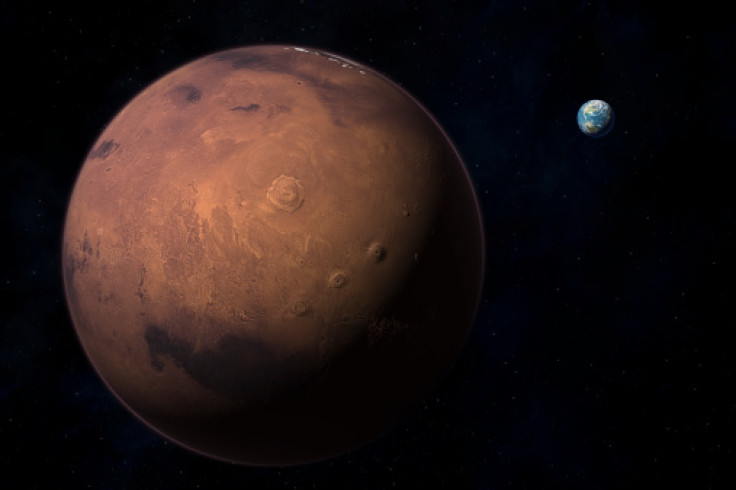Life on Mars May Exist Say Scientists After Studying Meteorite and Finding Evidence of Water

Scientists have detected signs of water in a piece of a 1.3 billion-year-old Martian meteorite, throwing up possibilities of existence of life in the planet's past, or even the present.
Professor Ian Lyon from the University of Manchester, who along with Elias Chatzitheodoridis of the National Technical University of Athens conducted the study said, "We have been able to show the setting is there to provide life. It's not too cold, it's not too harsh. Life as we know it, in the form of bacteria, for example, could be there, although we haven't found it yet. It's about piecing together the case for life on Mars – it may have existed and in some form could exist still."
Their findings are published in the latest edition of the journal Astrobiology.
The team used high resolution imaging to reveal the atomic layers of materials inside the meteorite. Known as Nakhla, the meteorite fell to earth in 1911 and around 40 pieces were recovered from the site in Egypt.
While investigating the rock piece, Greek scientists found an unusual feature embedded deep within the rock, resembling a fossilised biological cell from Earth.
Their research found that while it was probably not a cell, it did once hold water. The water had been heated and boiled away, probably as a result of an asteroid impact.
The findings provide grist to long-held theories that predicted favourable conditions for life on Mars. It also adds to theories suggesting large asteroids hit Mars in the past and produced long-lasting hydrothermal fields of water beneath the surface that could sustain life on Mars whenever it emerged there.
Recent studies based on samples of ancient soil of Mars have suggested the planet possibly harboured microbial life when it was warmer and wetter than it is today.
With Nasa's rovers Curiosity and Opportunity rambling on the Martian terrain, drilling and analysing rock specimen and searching for signs of microbial life, newer missions like Insight and Maven are seeing a beehive of activity on and around the Red Planet. The Indian spacecraft Mangalyaan is the next one slated to arrive in orbit around Mars on 24 September.
© Copyright IBTimes 2024. All rights reserved.





